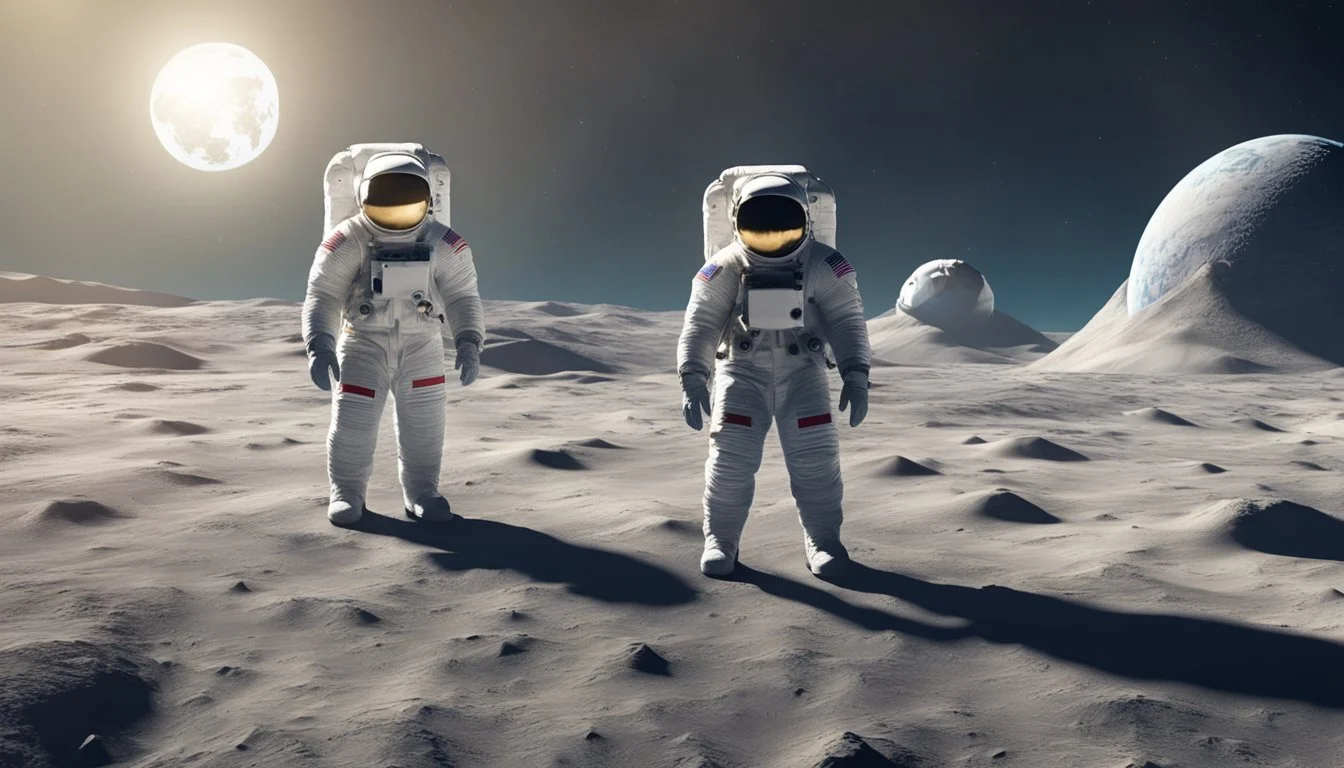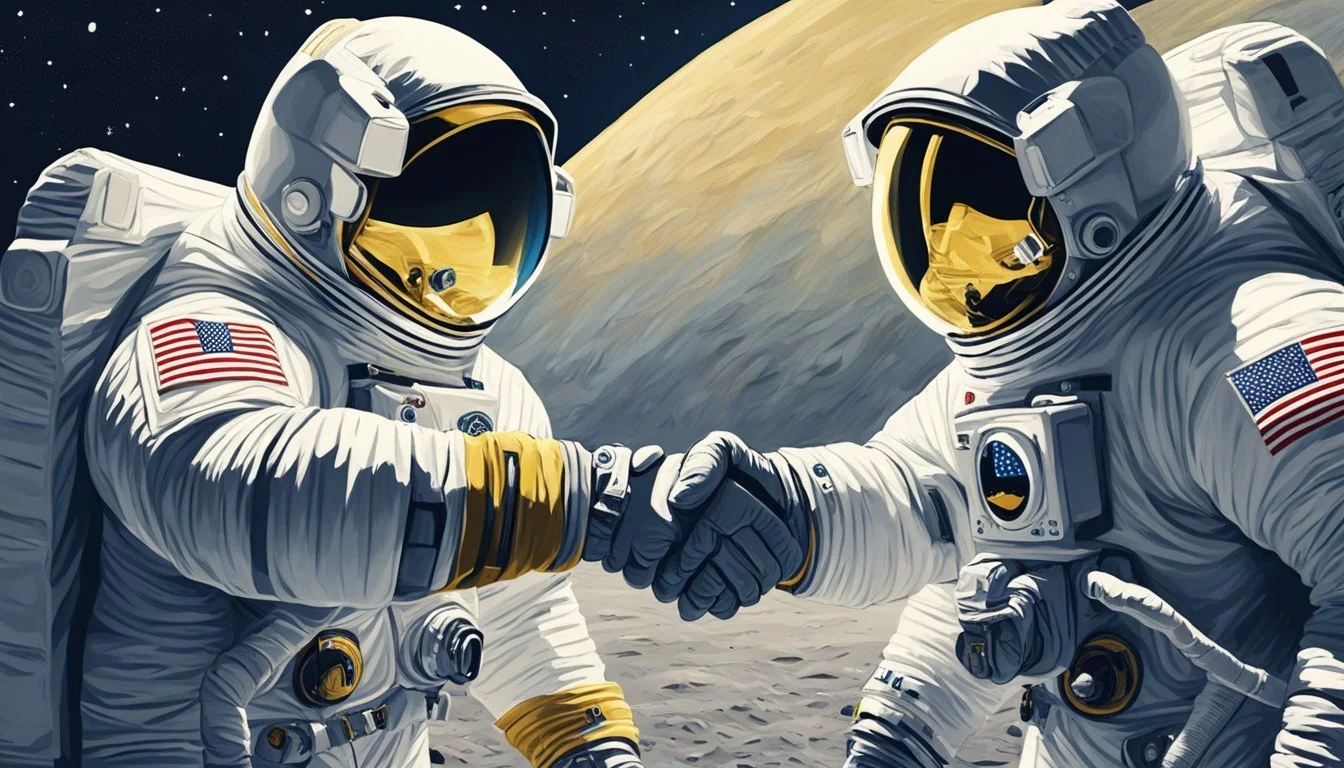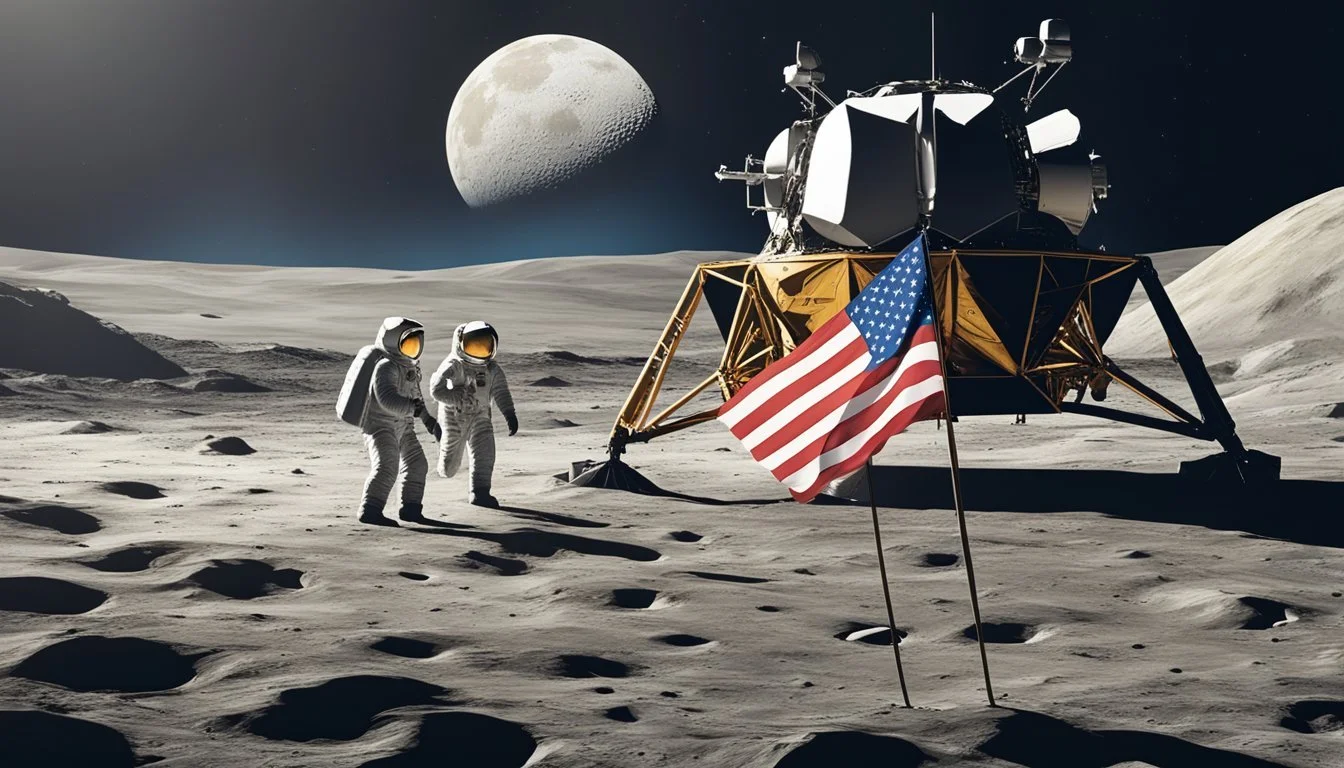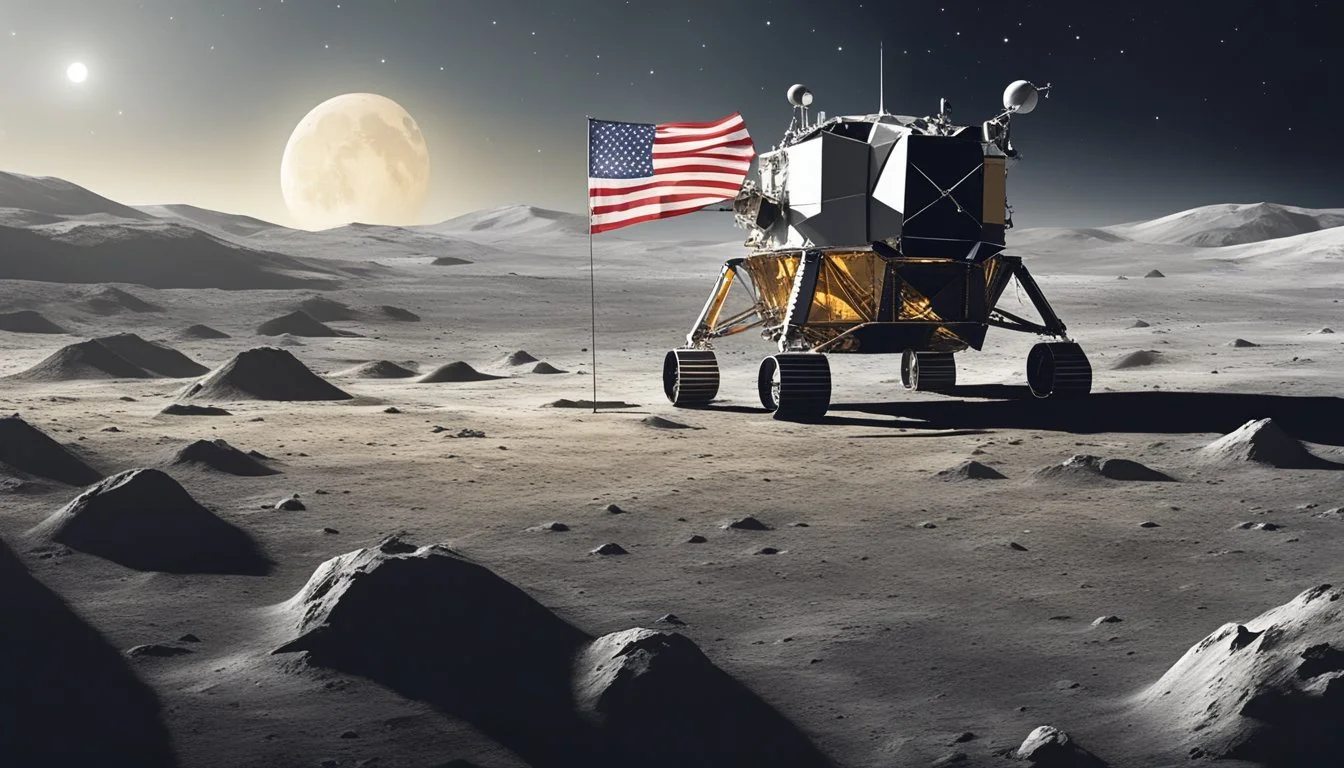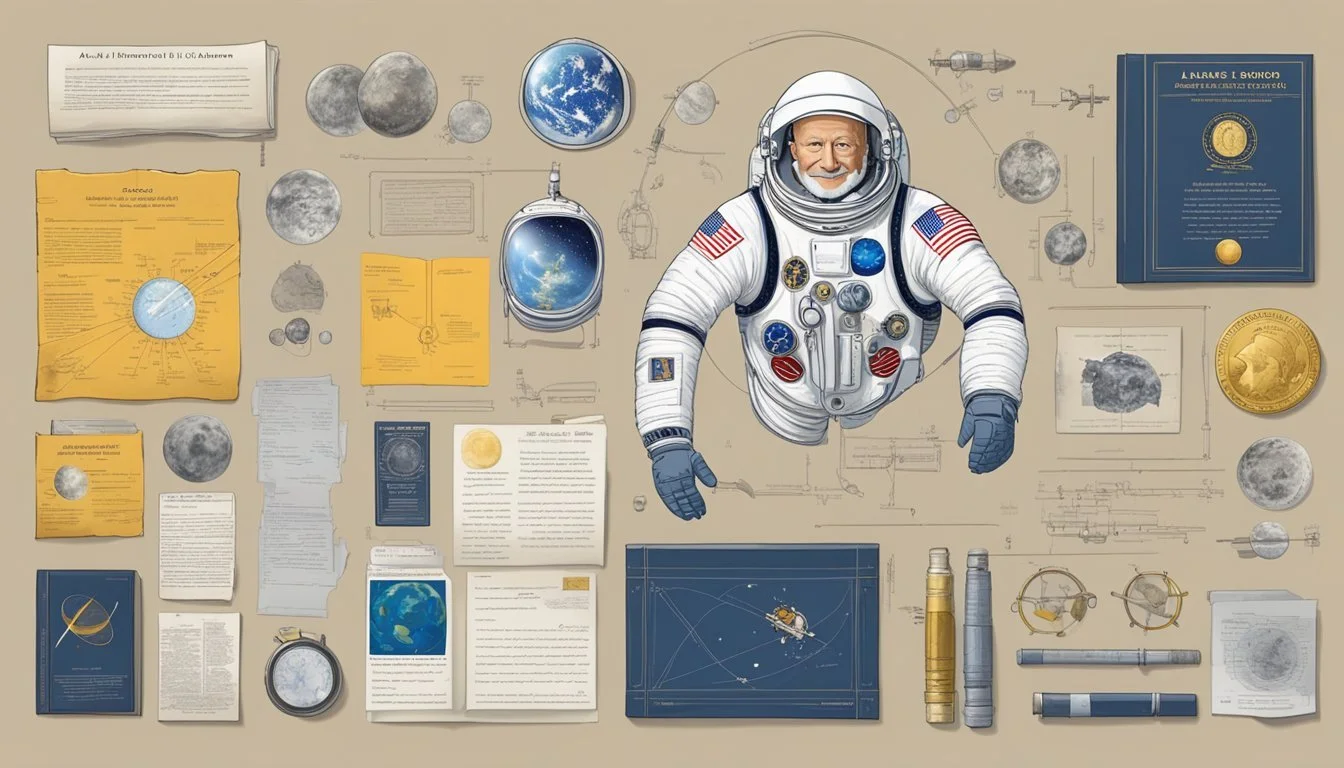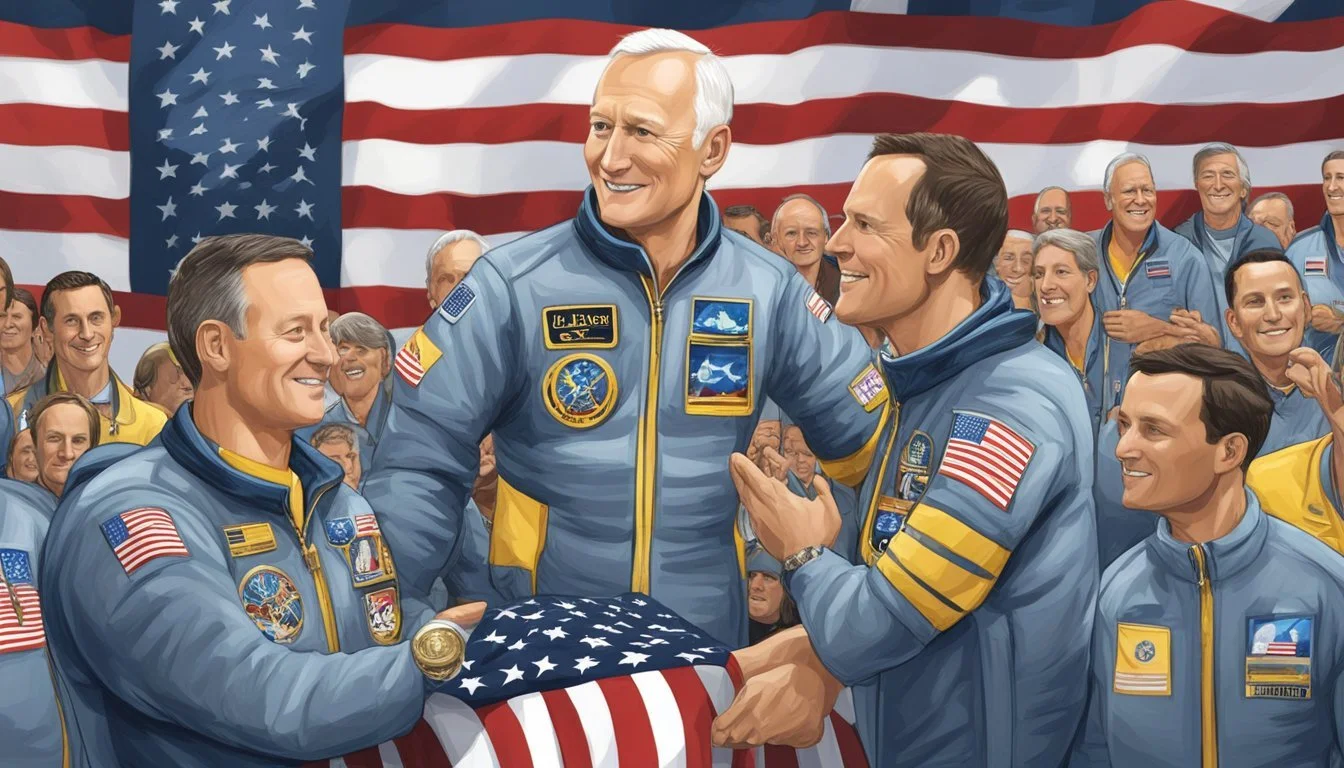Buzz Aldrin and Lance Armstrong Achievements Compared
Space and Cycling Legends Compared
Buzz Aldrin and Lance Armstrong are two iconic American figures associated with groundbreaking achievements, though in vastly different fields. Aldrin made history as the second human to walk on the Moon during the Apollo 11 mission in July 1969. As lunar module pilot, he followed mission commander Neil Armstrong onto the lunar surface, leaving humanity's first footprints on another celestial body.
Lance Armstrong, on the other hand, gained fame in the world of professional cycling. He won the prestigious Tour de France seven consecutive times from 1999 to 2005, overcoming testicular cancer earlier in his career. Armstrong's cycling accomplishments were later overshadowed by doping allegations and his subsequent admission of using performance-enhancing substances.
While both men achieved extraordinary feats, their legacies have diverged significantly. Aldrin remains celebrated as a pioneering astronaut and advocate for space exploration. Armstrong's reputation suffered after the doping scandal, leading to the stripping of his Tour de France titles and Olympic medal. Their stories illustrate the complexities of fame, achievement, and public perception in different realms of human endeavor.
Biography of Buzz Aldrin
Buzz Aldrin, born Edwin Eugene Aldrin Jr., is an American astronaut, engineer, and former fighter pilot. He played a pivotal role in space exploration and became the second person to walk on the Moon.
Early Life and Education
Buzz Aldrin was born on January 20, 1930, in Glen Ridge, New Jersey. He showed an early interest in science and aviation, influenced by his father, an aviation pioneer.
Aldrin excelled academically and attended the United States Military Academy at West Point. He graduated in 1951 with a Bachelor of Science degree in mechanical engineering.
After his military service, Aldrin pursued higher education. He earned a Doctor of Science degree in Astronautics from the Massachusetts Institute of Technology in 1963. His thesis focused on orbital rendezvous techniques, which would prove valuable in his future space missions.
Military Service and NASA Career
Aldrin served as a fighter pilot in the U.S. Air Force during the Korean War. He flew 66 combat missions and shot down two MiG-15 aircraft.
In 1963, NASA selected Aldrin as part of their third group of astronauts. He played a crucial role in developing docking and rendezvous techniques for spacecraft.
Aldrin's first space flight was aboard Gemini 12 in 1966. He performed three spacewalks, setting a record for extravehicular activity.
His most famous mission came on July 20, 1969, as part of Apollo 11. Aldrin, alongside Neil Armstrong, became one of the first humans to land on the Moon. He followed Armstrong onto the lunar surface, becoming the second person to walk on the Moon.
Post-Apollo Contributions
After retiring from NASA in 1971, Aldrin remained active in space advocacy. He developed the "Aldrin Mars Cycler," a spacecraft system for sustainable Mars exploration.
Aldrin authored several books, including his autobiography "Return to Earth" and technical works on space exploration. He received numerous honors, including the Presidential Medal of Freedom.
In recent years, Aldrin has continued to promote space exploration and colonization. He established the ShareSpace Foundation to inspire future generations of space explorers and scientists.
Historical Context of the Apollo Program
The Apollo Program emerged from intense geopolitical rivalry and built upon earlier spaceflight achievements. It represented a pivotal moment in the Cold War space race between the United States and Soviet Union.
The Space Race and Cold War
The Space Race began in 1957 when the Soviet Union launched Sputnik 1, the first artificial satellite. This shock spurred the U.S. to accelerate its space efforts. In 1961, Soviet cosmonaut Yuri Gagarin became the first human in space, followed shortly by American Alan Shepard.
President John F. Kennedy responded by setting an ambitious goal in 1961: landing a man on the Moon by the end of the decade. This bold vision aimed to demonstrate American technological superiority and prestige on the world stage.
The Apollo Program became a key battleground in the Cold War, with each side seeking to prove the superiority of their political and economic systems through space achievements.
Significant Predecessors: Mercury and Gemini Programs
Project Mercury (1958-1963) was America's first human spaceflight program. It achieved several milestones:
First American in space (Alan Shepard)
First American to orbit Earth (John Glenn)
The Gemini Program (1961-1966) followed, serving as a crucial stepping stone to Apollo. Gemini missions:
Perfected techniques for orbital rendezvous and docking
Demonstrated long-duration spaceflight
Conducted the first American spacewalks
Gemini 12, the final mission, refined critical skills needed for lunar missions. These programs laid the groundwork for Apollo's ultimate success, developing technologies and procedures essential for reaching the Moon.
The Apollo 11 Mission
Apollo 11 marked a pivotal moment in human history as the first mission to land astronauts on the Moon. The mission achieved President Kennedy's goal of reaching the lunar surface before the end of the 1960s.
Preparation and Training
NASA selected Neil Armstrong, Buzz Aldrin, and Michael Collins for the Apollo 11 crew. The astronauts underwent rigorous training, including simulations of lunar landing and moonwalks.
They practiced in a Lunar Landing Training Vehicle to prepare for the Moon's lower gravity. The crew also trained extensively with the Command Module Columbia and Lunar Module Eagle systems.
Geological training helped the astronauts identify important rock samples on the lunar surface. They studied lunar maps and photography to familiarize themselves with potential landing sites.
Launch from Kennedy Space Center
On July 16, 1969, Apollo 11 lifted off from Kennedy Space Center in Florida. The massive Saturn V rocket propelled the spacecraft into Earth orbit.
Thousands of spectators watched the launch in person, while millions more viewed it on television. The three-stage Saturn V performed flawlessly, placing Apollo 11 on its trajectory to the Moon.
After reaching Earth orbit, the crew performed systems checks before initiating the trans-lunar injection maneuver. This burn sent Apollo 11 on its 3-day journey to the Moon.
Journey to the Moon and Lunar Orbit
During the trip to the Moon, the crew performed course corrections and prepared for lunar orbit insertion. They broadcast live television transmissions back to Earth, captivating global audiences.
On July 19, Apollo 11 entered lunar orbit. Armstrong and Aldrin transferred to the Lunar Module Eagle, while Collins remained in the Command Module Columbia.
The crew conducted final checks and preparations for the historic landing attempt. NASA carefully monitored the spacecraft's systems and trajectory from Mission Control in Houston.
Moon Landing and Exploration
On July 20, Eagle separated from Columbia and began its descent to the lunar surface. Armstrong piloted the lander, avoiding a boulder-strewn area to touch down safely in the Sea of Tranquility.
Armstrong radioed, "Houston, Tranquility Base here. The Eagle has landed." He then became the first human to step onto the Moon, uttering the famous words: "That's one small step for man, one giant leap for mankind."
Aldrin joined Armstrong on the surface, and they collected samples, took photographs, and planted the American flag. They spent about 2.5 hours exploring the lunar surface before returning to Eagle.
The astronauts left scientific instruments, commemorative items, and a plaque stating: "We came in peace for all mankind." After 21.5 hours on the Moon, Eagle lifted off to rejoin Columbia in lunar orbit.
Key Moments of Apollo 11
Apollo 11's historic mission included several pivotal events that captivated the world. From touchdown on the lunar surface to the astronauts' safe return, each moment marked a significant achievement in human spaceflight.
The Eagle Has Landed
On July 20, 1969, the Lunar Module Eagle separated from the Command Module Columbia. Neil Armstrong and Buzz Aldrin piloted Eagle toward the Moon's surface. As they descended, Armstrong reported, "Houston, Tranquility Base here. The Eagle has landed."
The landing site was in the Sea of Tranquility. Armstrong and Aldrin had successfully touched down on the lunar surface at 20:17 UTC. Mission Control erupted in celebration.
Eagle's landing marked humanity's first controlled descent to another celestial body. The moment fulfilled President Kennedy's goal set earlier that decade.
One Giant Leap for Mankind
At 02:56 UTC on July 21, Armstrong stepped onto the lunar surface. He uttered the now-famous words: "That's one small step for man, one giant leap for mankind."
Aldrin joined Armstrong about 20 minutes later. The two astronauts spent about two and a half hours on the Moon's surface. They collected samples, took photographs, and planted the U.S. flag.
The astronauts left behind scientific instruments and commemorative items. These included a plaque reading "We came in peace for all mankind."
Safe Return to Earth
After rejoining Collins in Columbia, the crew began their journey back to Earth. They splashed down in the Pacific Ocean on July 24, 1969.
The astronauts were recovered by the USS Hornet. As a precaution against potential lunar pathogens, they entered a mobile quarantine facility.
The successful return of Apollo 11 completed the mission. It demonstrated the ability to not only reach the Moon but also return safely to Earth.
Scientific Outcomes and Legacy
The Apollo 11 mission yielded groundbreaking scientific discoveries and sparked ongoing advancements in space exploration. Moon rocks and lunar soil samples provided unprecedented insights into the Moon's composition and history.
Collection and Study of Moon Rocks
Neil Armstrong and Buzz Aldrin collected 47.5 pounds of lunar material during their moonwalk. These samples were transported to Earth for analysis at the Lunar Receiving Laboratory. Geologists studied the rocks' composition, age, and formation processes.
The lunar samples revealed that the Moon formed about 4.5 billion years ago. They also showed evidence of ancient volcanic activity and meteor impacts. Scientists discovered that Moon rocks contained many of the same elements as Earth rocks, but in different proportions.
Analysis of lunar regolith provided information about solar wind interactions and cosmic ray exposure on the Moon's surface.
Ongoing Impacts of Apollo Discoveries
Apollo 11's scientific legacy continues to influence space exploration today. The mission's findings laid the groundwork for future lunar and planetary missions.
Improved understanding of the Moon's geology has informed theories about the formation of the solar system. Techniques developed for studying lunar samples have been applied to analyzing meteorites and samples from other celestial bodies.
The Apollo program's technological advancements have led to innovations in:
Remote sensing
Materials science
Computer systems
Medical research
These developments have practical applications on Earth, from satellite technology to medical imaging. Apollo 11's success also inspired a new generation of scientists and engineers, driving further progress in space exploration.
Post-Mission Events and Recognition
The Apollo 11 astronauts received widespread acclaim and honors following their historic moon landing. Their achievements were celebrated globally through parades, awards, and the careful preservation of mission artifacts.
Global Celebrations and Parades
Ticker-tape parades welcomed the Apollo 11 crew in major cities worldwide. New York City held a massive parade on August 13, 1969, with an estimated 4 million spectators lining the streets. Chicago and Los Angeles also hosted large-scale events.
International celebrations took place in Tokyo, Berlin, and Paris. These parades showcased the global impact of the moon landing and united people across nations in shared wonder and pride.
Television broadcasts of these events reached millions more, further amplifying the public's connection to the mission's success.
Commendations and Awards
President Nixon awarded Armstrong, Aldrin, and Collins the Presidential Medal of Freedom, the highest civilian honor in the United States. This ceremony took place on August 13, 1969, at the White House.
Congress presented the astronauts with the Congressional Space Medal of Honor in 1978.
NASA bestowed its Distinguished Service Medal upon the crew. International accolades included:
The USSR's Konstantin Tsiolkovsky Gold Medal
The Harmon International Aviation Trophy
France's Légion d'honneur
These awards recognized the astronauts' bravery, skill, and contributions to human exploration.
Preservation of Apollo Artifacts
The National Air and Space Museum acquired key Apollo 11 artifacts for public display. Items include:
Armstrong's spacesuit
The Apollo 11 command module Columbia
Moon rock samples
The National Archives stores mission documents and recordings. Efforts to preserve these items ensure future generations can experience the legacy of Apollo 11.
Museums worldwide feature exhibits dedicated to the mission. These displays often include replicas of equipment and interactive elements to educate visitors about the moon landing's significance in American and world history.
Advancements in Human Spaceflight
Space exploration has progressed significantly since the Apollo 11 mission. Subsequent lunar landings and international collaborations have expanded our reach beyond Earth's atmosphere.
Subsequent Apollo Missions
Apollo 12 launched in November 1969, achieving a precise landing near Surveyor 3. Astronauts Pete Conrad and Alan Bean conducted two moonwalks, collecting samples and deploying scientific instruments.
Apollo 13 faced a near-disaster in April 1970 when an oxygen tank explosion forced the crew to abort their lunar landing. The mission became a dramatic test of NASA's problem-solving capabilities.
Later Apollo missions continued to explore different lunar regions, gathering valuable scientific data and expanding our understanding of Earth's satellite.
International Cooperation and the Space Station
The International Space Station (ISS) represents a pinnacle of global collaboration in space exploration. Construction began in 1998, with modules from the United States, Russia, Japan, and European partners.
The ISS serves as a microgravity laboratory for scientific research and technological development. Crews from various nations have lived and worked aboard the station, conducting experiments in biology, physics, and astronomy.
This orbital outpost has fostered unprecedented cooperation in space, paving the way for future endeavors like potential Mars missions. It continues to provide valuable insights into long-duration spaceflight and its effects on the human body.
Modern Comparisons and Space Ambitions
Space exploration has evolved dramatically since the Apollo era. New technologies and ambitious goals have reshaped humanity's reach beyond Earth.
Transition from Apollo to the Shuttle and Beyond
The Space Shuttle program marked a significant shift from Apollo's moon-focused missions. Launched in 1981, the reusable shuttles enabled frequent trips to low Earth orbit. They played a crucial role in constructing the International Space Station (ISS).
The ISS, a joint project of five space agencies, became a symbol of international cooperation. It has hosted astronauts continuously since 2000, conducting scientific research in microgravity.
Post-Shuttle, NASA developed the Orion spacecraft and Space Launch System for deep space missions. Private companies like SpaceX and Blue Origin entered the field, introducing reusable rockets and new spacecraft designs.
The Goal of Mars Colonization
Mars has become the next major target for human exploration. NASA plans to send humans to Mars in the 2030s, while private entities like SpaceX aim for earlier missions.
Challenges include radiation protection, long-term life support, and psychological effects of extended space travel. Researchers are developing technologies to use Martian resources for fuel and supplies.
Robotic missions like the Perseverance rover are paving the way, studying the Martian environment and testing oxygen production from the atmosphere. These efforts bring us closer to the dream of a permanent human presence on another planet.

